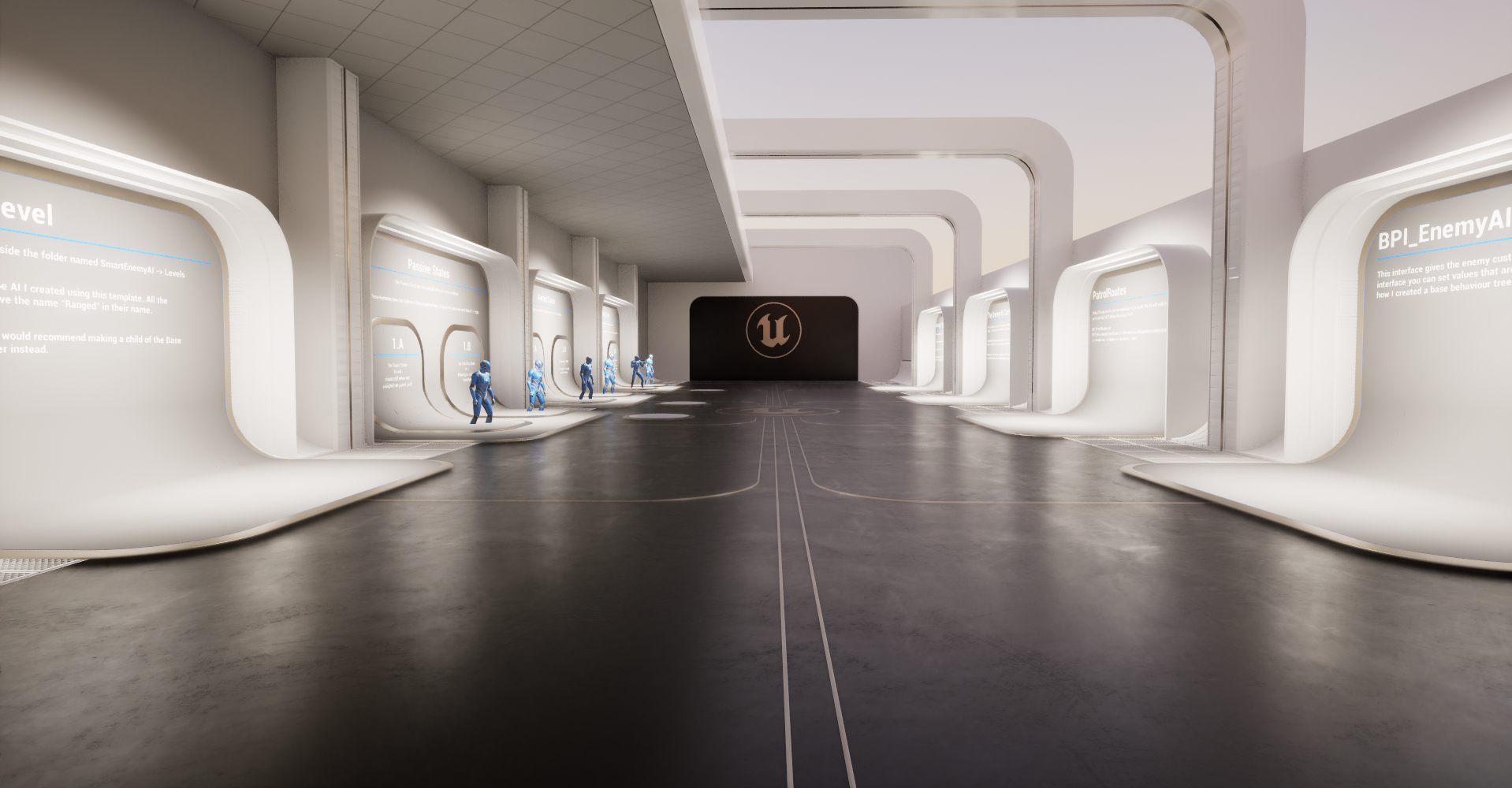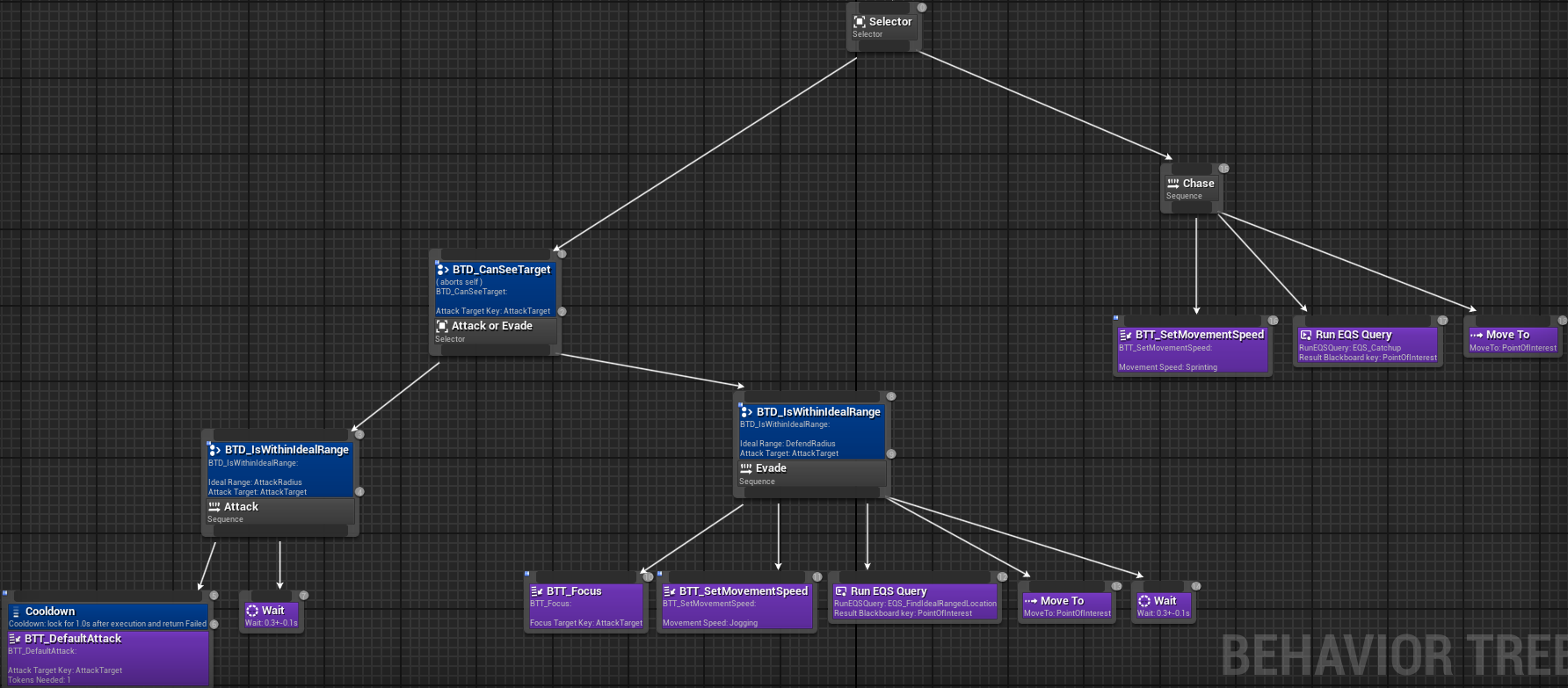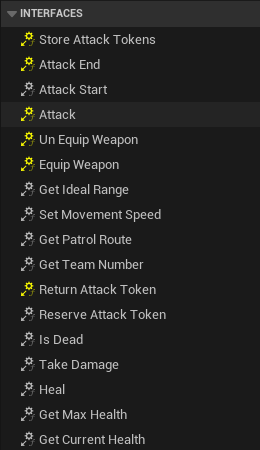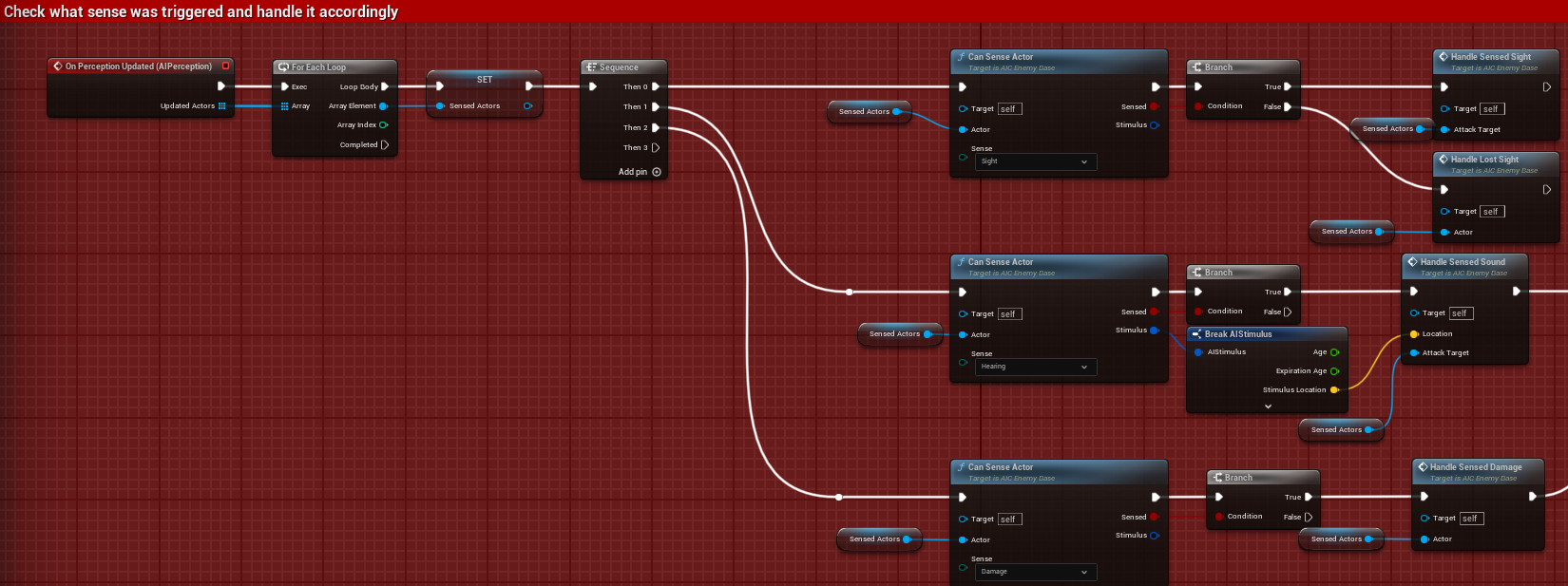Responsibilities
Research target game (MGS:V)
Implemented all of the Enemy AI
Created animation blueprints and blend spaces
Tested and iterated upon the enemy regularly to ensure they created the right player experience.
Made several research documents showcasing my findings
Made a “ How to implement” video and document
The project
Behaviour
I was given an 8 week period to choose any subject to research and try to recreate in a modular template. I chose the enemy soldiers of the game Metal Gear Solid V: The Phantom Pain.
I had been interested in creating enemies and behaviour trees for quite a while now, but never got the chance to fully explore that interest. This project was the perfect chance to finally deep dive into a new interest.
Passive: The default state where enemies stand still and only turn left and right sometimes to stand guard
Patrolling: Enemies can be given a custom made patrol route. If an enemy is given a patrol route it’s default behaviour will become patrolling instead of standing guard. It simply walks back and forwards on a spline and can be given custom wait times at certain points to make them look out windows or give them a bit more liveliness.
Spotting: Enemies have 2 ranges for their sight if the player is visible but only for a short time or too far away, the enemy will focus their focus on that direction, if triggered again they will attack, if not the enemy will either go investigate or go back to passive
Investigating: When the enemy hears a sound (footstep or gunshot) they will go and investigate the location. After reaching the location they enter the searching state
Searching: Enemies have reached the location they found suspicious and will now look around, to make this I chose the closest non line of sight location from their current location and they check behind that corner. If the player is not spotted in this duration the enemy will go back to passive/patrol.
Attacking: The player has been spotted and the enemies are out to get them. They will attack using an attack token system making sure they take turns to take cover and peek the player.
Heal/Cover: When the enemies reach below 40% health they will try to fall back to the nearest cover and heal before coming back into the combat
About my work
Since Metal Gear Solid V has factions of enemies I decided to create these as well. This let me create a “Free For All” gunfight with different enemies. I made enemies join my team as NPC allies and made full on 5v5 battles between them. It was something I decided to add later, but it was really useful to study my written behaviour as a spectator while 2 or more enemies fought each other.
This way of testing my behaviour, by being a spectator on the outside while all these NPC’s were running around doing all they can was incredibly valuable. It made testing new behaviour easier and improved my testing process a lot.
Since this project was supposed to become a template that could hypothetically be sold on the Unreal Market Place. Easy to use, modularity and clean code were all very important. This caused me to learn a lot of good habits when it comes to blueprinting and making sure everything is neat and organized at all times. I commented all my code, wrote descriptions for all variables and kept all my variables organized in categories.
Take-Aways
This was the first time I got to make any enemies with actual behaviour. So, this was the first time I looked into systems like behaviour trees and EQS.
Behaviour Trees: The main place for all your behaviour and It is a perfect place to work in. I quickly started using “sub behaviour trees” By making some logic that is reused often in its own separate behaviour tree and then calling that logic from within other behaviour trees. This caused me to work a lot faster when creating new versions of enemies and helped with keeping the behaviour tree clean and readable. I also used Behaviour Tree “Tasks”, “Decorators” and “Services”. These let me have more control over my behaviour tree and tweak the behaviour more towards my wanted player experience.
Environment Query System: Or “EQS” is very customizable system that lets an actor ask where to go based on certain tests. This can be perfect for very specific behaviour, but when set up poorly can be very heavy for performance. This EQS can be used in a behaviour tree to create possible locations and you can then even choose if it chooses the best solution always or maybe one out of the top 5% for example, creating some more organic decisions at times.
Interfaces: I also started integrating Interfaces in my code. I spent some time learning and really understanding them. I tried to use interfaces for as much as I could and keep the whole project incredibly modular.
Technical Designer
Nov 2023 - Jan 2024 (8 weeks)
Solo project
Unreal Engine 5.3, Jira, Perforce












